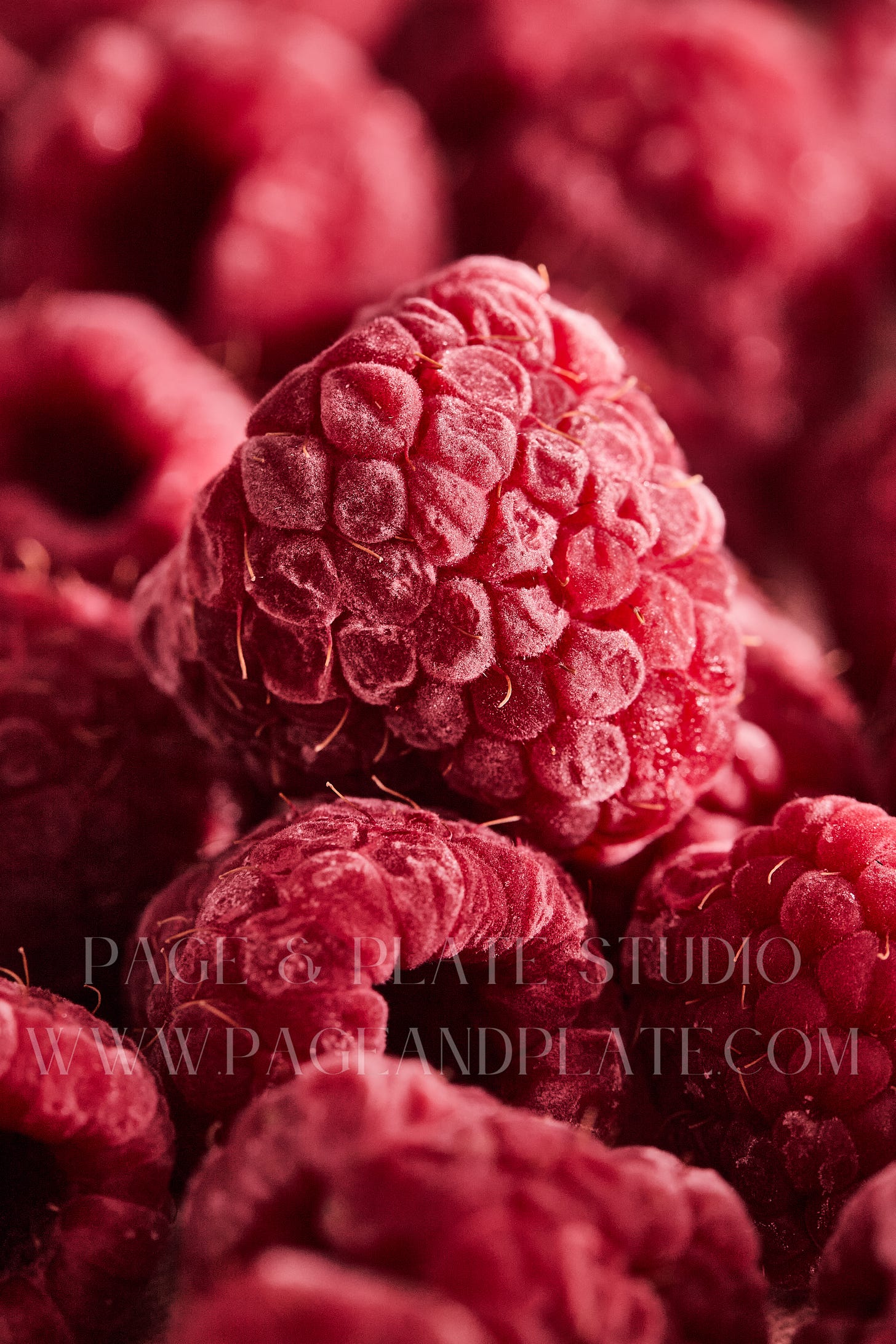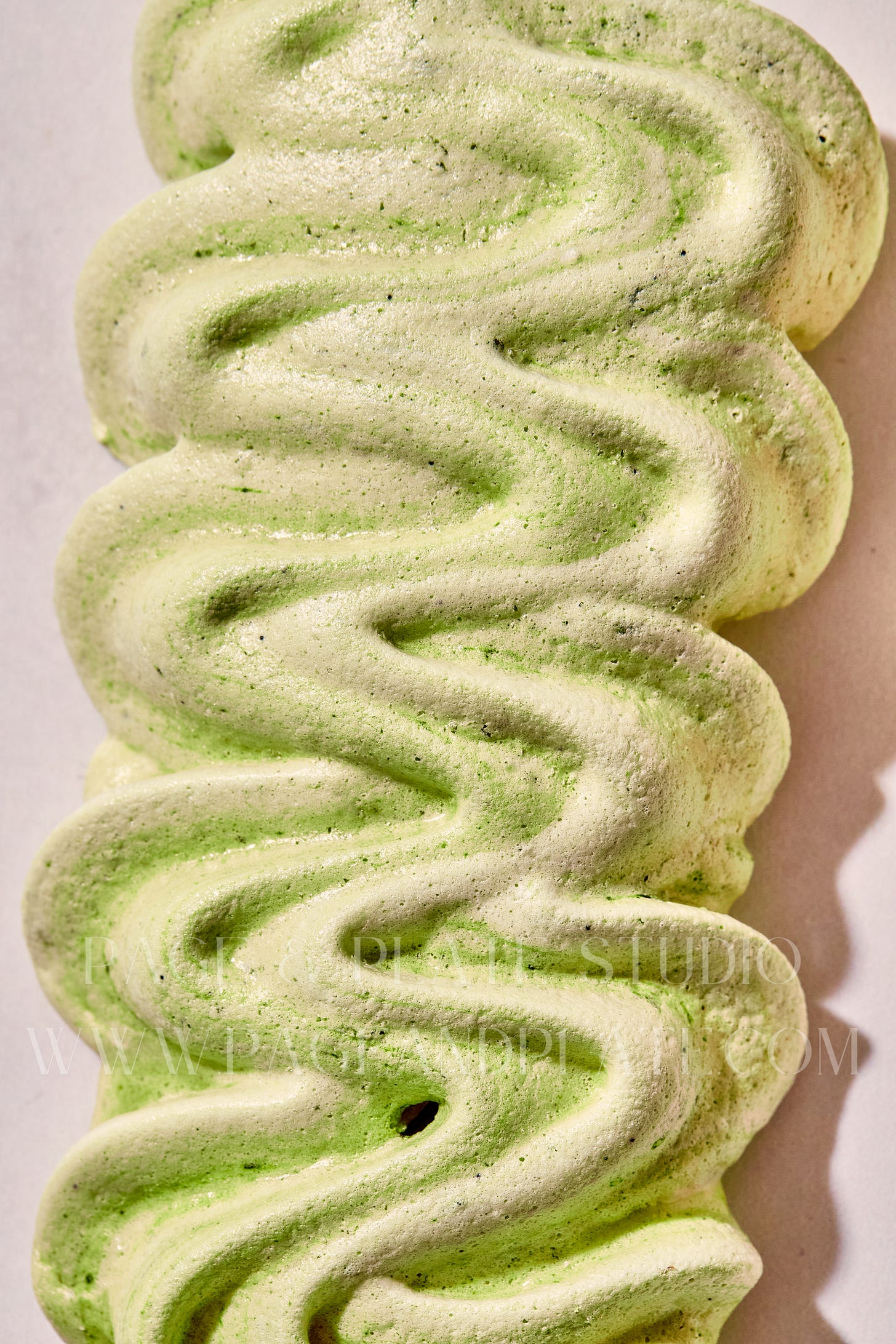Happy Tuesday! Today’s post is a dive into the ethics of food styling. Next Tuesday, paid subscribers will receive a recipe for the granola I make once a week. As always, check out my past posts here and learn more about my day job here. Thanks for reading!
Every few years, a clickbait-filled website publishes some version of this video spilling the secrets of Hollywood-style food styling tricks. You already know the ones I mean: using mashed potatoes to make an ice cream sundae, pouring Elmer’s Glue onto cinnamon buns for a sturdier icing, making pizza slices out of cardboard to better hold melted cheese. As a food photographer and stylist, when I see those articles, I roll my eyes. If only food styling were that easy.
When I first started to write this piece—a frustrated reaction to these scandalized videos of the tricks of the trade—I did some basic Goggling: about food styling, industry standards, and the guidelines that govern this trade. In my research for this piece, I had a sobering realization: there simply are none. Google “food styling rules,” and you get pages and pages of food bloggers-turned-photographers (and, full disclosure, I am one of them) who have published tips on how to make food shine on camera.
These tips mostly consist of methods like nesting a smaller bowl upside down inside a larger one and then adding soup so garnishes can be easily seen or taking a hair dryer to the tops of chocolate chip cookies to make them appear fresh out of the oven. This is food styling at its most basic level: manipulating food in some way to make it appear more attractive on camera. These tips, which are not rules by any means, are leagues away from what it means to be a professional food stylist.
One of those professionals is Kaitlin Wayne, who has worked for publications ranging from Bon Appétit to the Wall Street Journal, styled food and drinks for award-winning cookbooks, and participated in countless large-scale commercial shoots. “To me, food styling is the art of preparing the food intentionally for the camera to look its best,” Wayne explained. “You’re preparing the food to compliment the lighting and the props. It’s all one piece of art working together.”
But what exactly that mandate involves is what we’re here to puzzle through today. Sure, not every food photo involves a stylist, but the more eyes that see the final image, the more likely a stylist (or several) played a role. In publishing, having a food stylist on set is standard, and consumer packaged goods (CPG) brands and restaurant groups increasingly hire stylists or agencies to ensure their foods and products look flawless on camera.
Because food styling varies widely, let me just take a moment to define how I think about it in my work. The food styling I’m talking about for the purpose of this piece falls into two categories: commercial styling, which is often commissioned by the CPG brand itself to help a product look its best with as much manipulation as needed, and editorial styling, which focuses more on recipes and tends toward more natural representations of the food. (And, a reminder in the interest of disclosure: I’ve worked across this spectrum, which is what drew me to this topic.)
There have been many times in the last few years as a commercial food photographer and stylist that a request from a client has given me pause. I think most people understand that the photos of juicy, sky-high burgers piled with verdant lettuce and perfectly sliced heirloom tomatoes are not the reality that awaits them at most fast food chains. “Commercial and ad work makes you think about the cartoon version of the food,” Wayne said. “You’re trying to find the most perfect food possible.” Of course we are! That’s our job in that moment, and that doesn’t feel like a flagrant disregard for reality. In fact, on set for a job like that is exactly where Wayne and I met.
But reality starts to feel a little less concrete when you get into the world of editorial food photography and styling, especially when it comes to brands who publish recipes on their company blogs—recipes created intentionally with that product to inspire consumers to buy more. In those moments, I hesitate. Recipes should likely be made with the products they’re designed to sell, especially for testing and photography purposes. But groceries are expensive; products are delayed and necessitate substitution; and sometimes, clients straight up ask me to use a competitor’s product in place of their own because it “looks better.” How should I handle that?
The answer, unfortunately, is that there’s no right answer. While stylists grapple with ethical concerns, the legal system has its own take on what counts as deception. “False advertising is advertising that says or depicts things that are not truthful,” said Spencer Sheehan, an attorney from Long Island, New York, when I interviewed him for this piece in 2023. I had emailed him after reading about the slew of false advertising lawsuits he had filed on behalf of customers, numbering in the hundreds. Sheehan, who was profiled in The New Yorker as the face of false advertising lawsuits, has pursued so many of these cases and complaints that he has been sanctioned by judges, including a United States District Attorney in Florida, who ordered him to pay attorney’s fees for the case in question as well.
Sheehan explained his work to me like this: when companies use phrases like “real vanilla” on their packaging but use artificial flavors in their recipes, consumers have a case for a lawsuit. Harm is being done—the companies are lying to the consumers about what’s actually in that product. “The types of things I’ve dealt with are based on words, and that’s partly because words can have specific meanings,” said Sheehan.
But as soon as photography is involved, things get more complicated and more difficult to pin to a precedent. Using a photo of a vanilla bean when in fact the flavor is added artificially could pose the same legal risk, all predicated on the idea that a consumer is being misled about the nature of the product and its ingredients. But using a photo of a hamburger carefully shaped by hand for the sake of a photograph when in fact the real burgers are frozen discs of beef less than an inch thick? That becomes extremely difficult to prove the harm to the consumer and therefore difficult to pursue the case that a customer is being misled.
“It’s challenging for people to know that a picture of a hamburger might be made out of some composite substance or when the leaf of lettuce was so carefully picked as the most beautiful leaf in the entire head of lettuce,” said Sheehan. “It has the same nutrient content. It has the same composition. Is there a deception there if it does not look as nice but otherwise contains the same components? I don’t know.”
Of course, this makes perfect sense. Words are words. They live in the dictionary. But photos and depictions of food are much, much more subjective. A 2022 lawsuit against McDonald’s and Wendy’s was brought by customers with complaints that the images the companies used did not accurately represent the sizes of the food itself. The suits were dismissed by a federal judge who ruled that the images “are no different than other companies’ use of visually appealing images to foster positive associations with their products.”
To me, that feels pointed: consumers are expected to understand the way foods are manipulated in commercial photography. Consumers, as reasonable people, should know that. But does a reasonable person understand the hours that can go into crafting the perfect hamburger and how much of a contrast that is to the one that gets thrown together in two minutes while you wait at a drive-thru? And what are reasonable people expected to know for editorial photography? Does a reasonable person understand the work that can go into making the tricky dessert you’re attempting from a new cookbook look effortlessly chic for the photo shoot? That it might not actually be your fault if the whipped cream doesn’t lay quite so perfectly because actually that’s whipped cream made with cow’s milk and not coconut milk as the recipe calls for?
Over the last few years, as more and more of my work has shifted into editorial territory, I’ve been lucky to be able to draw these lines for myself—I will work hard, at great expense to myself and my time, to be able to work with food that gets as close to real life and what it’s being asked to represent as possible. My goal with the food that I style is to be able to eat most of it at the end of the shoot. If a dish looks glossy or extra vibrant, it’s because of how I (or a food stylist I’ve hired) plated it or how the light hits—not because I altered the ingredients or preparation to be something a home cook couldn’t replicate. That feels good.
And yet. There are still days where the products don’t look their best. And there are still clients in my commercial work who ask if I can buy cheaper, alternative ingredients for a recipe or a competitor’s product to use in place of their own. And those are the days that I chew on my morals, wonder about the ethics of it all, and wish there was more guidance.
If food and beverage companies can be held responsible for misleading consumers with the words they use to describe their product, why aren’t images policed in the same way?
See you back here on Tuesday for wholesome granola!






EXCELLENT food for thought and I’m not even trying to be punny
I would love someone to talk about how so many food publications these days are upping the saturation and contrast of their images digitally. There’s a very distinctive look and feel on the web and it’s really blowing out the colors.